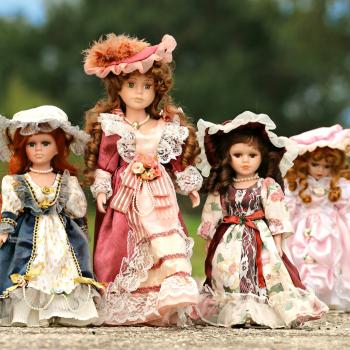Let’s try a thought experiment. In today’s society, most cups are mass produced. Factories can make tens of thousands of them per day with very little labor. These factories use a cookie cutter mold so that all the cups it produces look identical. Any cup with a dent or a wobble is thrown out. There is very little time spent on each cup: the machines pour plastic into a mold, tamp it down, and then spit out the finished cups. The factory counts its success in sheer number of identical cups produced.
There is another way to make cups, though. Some cups are shaped individually on a potter’s wheel. The potter uses attention and care as he shapes the clay, listening to to the clay with his fingers and responding in turn. Every potter has an ideal cup in mind, but a good potter also allows the clay to speak. Different clay has different lumps and a different feel, and every cup turns out differently, beautiful in its own way. Sure, the potter cannot make as many cups in a day as a factory can, but his cups are masterpieces.

When I look at the difference between the Quiverfull family with a dozen or more children and the average (functional, for sake of example) American family with only two children, I see the difference between the mass production of children and the creation of individual masterpieces. Now obviously, this analogy only goes so far, but there is a definite difference in approach here. And so I have to ask, just how should children be raised? Is the goal to mass produce a dozen or more arrows for God, or to raise individual children with their own personalities, wants, and desires? Is the goal to create identical plastic copies, or individual ceramic masterpieces? Is the goal quantity, or quality?
There is another striking difference going on here as well. Mass production emphasizes conformity while the hand made emphasizes individuality. Yet technically the Quiverfull ideal is to turn out strong individuals who can serve God dynamically and influence the culture around them. It seems to me that putting out such individuals would necessitate a lot of individual time, attention, and nourishment. Yet at the same time the Quiverfull ideal calls on families to have eight, ten, a dozen or more children, and essentially mass produce them through carefully laid out rules and routines. Everyone has their place and their role to play if an industrialized size family is to operate correctly, and mom and dad have to spread their attention among a large number of children. This system doesn’t turn out individual masterpieces; it turns out identical conformers who know their place and stay in it.
One last point to my analogy needs attention. What happens to the cups that have individual quirks? In the factory system, cups that are different are tossed out as imperfect without so much as a second thought. A potter, though, looks at his cup’s quirks and sees them not as problems but as part of the cup’s unique appeal. This difference hits especially close for me and my experiences.
Now it’s not that I’m against large families. I do think, though, that if parents don’t have time to give their children individual attention, and find themselves outsourcing the parenting to the older children, there is a problem. Children should not be mass produced. They deserve better than that. Each child holds within him or her the seed of a masterpiece, and that seed needs to be fostered, nourished, and invested in.
















